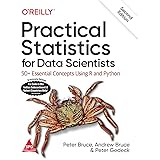Data Science in Banking and Finance
Data Science in Banking and Finance, When was the last time you went to the bank or wrote a cheque?
Although the classic chequebook still has its uses, your debit card and mobile banking apps are probably used far more frequently these days.
Before COVID-19 boosted the usage of contactless payments, deposits, and transfers, this digital transformation had already begun.
How To Become A Quantitative Analyst » finnstats
As a result, the application of artificial intelligence (AI) in banking as well as data science in general has grown in significance.
Financial institutions can cut down on the time and expense of processing transactions when they are done digitally, even though consumers value the speed and convenience of online banking and payments since they must convert paper-based records to digital ones nevertheless.
Customers using digital banking more often also reduces the requirement for actual branch offices to handle in-person transactions, which results in further cost savings.
For individuals searching for a stable career path, the expanding role of AI and data science in finance, banking, and insurance has greatly increased demand (and potential).
We’ll examine this development in more detail and discuss how you can work in data science or artificial intelligence to pursue a career in finance.
Why is Data Management Essential for Data Science? » finnstats
Finance Innovations Using AI and Data Science
Some of today’s most cutting-edge technologies are powering the booming financial technology (or “fintech”) industry, which is being driven by the demand for dependable, secure transactions with a minimum requirement for customer service interactions on the part of both consumers and financial institutions.
As an illustration, AI chatbots have advanced to the point where they can now manage a sizable amount of conversations that previously required people.
These five technology advancements in particular have found favor with financial institutions:
- Open banking
- Blockchain
- Mobile banking
- AI and machine learning
- Microservice architecture
Open Banking
Application programming interfaces (APIs) are used to share data when you use Square or PayPal to authorize the credit card or cash payments.
These are only a few of the more typical applications of open banking, which is the idea of leveraging APIs to allow outside organizations to process financial data from customers (with proper consent, of course).
Another illustration is the widespread credit scoring company, FICO, having access to financial data.
When addressing the open banking movement, it is impossible to overestimate the value of data science in finance.
The structure of these data exchanges, the standardization of the meaning of the data, and the analytical capabilities of the data are all determined by data science.
The process by which third parties infer conclusions from data and, consequently, the way financial institutions make data-driven decisions has been improved and automated by AI and machine learning.
Find out which data skills are most in demand? » finnstats
Blockchain
Blockchain offers a very secure ledger of transactions that enables verification by all parties.
Blockchain’s strength comes from its transparency, as opposed to the “lock box” method of financial security.
Because the shared ledger is transparent, any attempt to change or distort the data would be discovered.
Beyond the well-known, blockchain-derived cryptocurrency Bitcoin, the general public is only now starting to become familiar with this sophisticated technology.
Blockchain technology has the potential to be used in a wider range of financial transactions in the future, enabling the secure execution of more types of transactions and documentation in the digital space.
Process of a typical Data Analyst Interview » finnstats
Mobile Banking
These days, almost all major banks offer mobile banking.
These services allow you to open up new accounts, pay bills within the app, deposit checks using your phone’s camera, and complete other actions that formerly required a trip to the bank or the mailing of paperwork.
You can even examine your bank data in real-time. Once more, this trend helps both the consumer and the financial institution by cutting costs, speeding up transactions, and broadening the range of services they may provide.
The rise of “neobanks”—banks that solely conduct business online—which have the ability to provide more cost-effective and efficient banking services is something that is relatively new in the world of mobile banking.
You should expect traditional banks to restructure their mobile banking operations so that they appear more like neobanks with a variety of traditional services available, to the extent that they can deliver those services with greater ease and lower cost than traditional banks.
Best Books for Data Analytics » finnstats
AI and Machine Learning
Many banking, financial services, and insurance (or “BFSI”) applications are powered by AI and machine learning.
Trading systems and pricing models in finance are driven by AI (and data science). For customers, AI in banking powers services like credit management.
Natural language processing (NLP), a branch of AI, enables chatbots and voice response systems for automated customer care.
These automated systems have advanced significantly since their initial incarnations, which left a lot to be desired (“May I speak with a human, please?”).
Continuous development is required for these and many other BFSI systems to ensure that customer service keeps getting significantly better and that transactions may be handled more quickly, effectively, and error-free.
These factors indicate that AI in banking is here to stay.
Common Misconceptions About Machine Learning » finnstats
Architecture for Microservices
A novel method of approaching the design of information systems is the concept of microservice architecture.
Large, interconnected systems of software functions were produced using traditional software, making it challenging to upgrade or modify these systems.
To put it another way, altering one component of the system will typically have unanticipated effects on numerous other components.
The lack of an environment that encouraged frequent, incremental changes, slowed down the rollout of new services or upgrades.
Microservice design transforms huge software systems into smaller, autonomous components that each offers a specific service as an alternative to the conventional approach.
As long as they continue to offer the same services they did before in addition to any new ones, components can be altered separately.
This enables enterprises to make focused adjustments without upsetting the system as a whole.
Microservice architecture for banking and finance uses data science and AI to provide quick, error-free software development and deployment.
DevOps and continuous integration and delivery (CI/CD) are specifically included in this.
How to Become a Data Science Master? Data Science Tutorial finnstats
Learn the Knowledge and Techniques Required to Apply AI and Data Science in Finance
Concerns about data security and privacy have grown as financial organizations migrate transactions and even entire operations to digital platforms.
As AIOps become more prevalent, artificial intelligence is also being utilized to handle security issues.
Even if digital security technology is getting more advanced, there is still a rising need for additional cybersecurity experts.
Now is the perfect time to participate in the exciting new prospects made possible by the growing use of data science in banking, artificial intelligence in finance, and other related breakthroughs in the digitization of financial services.
And while the social distance rules put in place after the COVID-19 outbreak may gradually fade, the tendency toward digital banking trend will continue.






